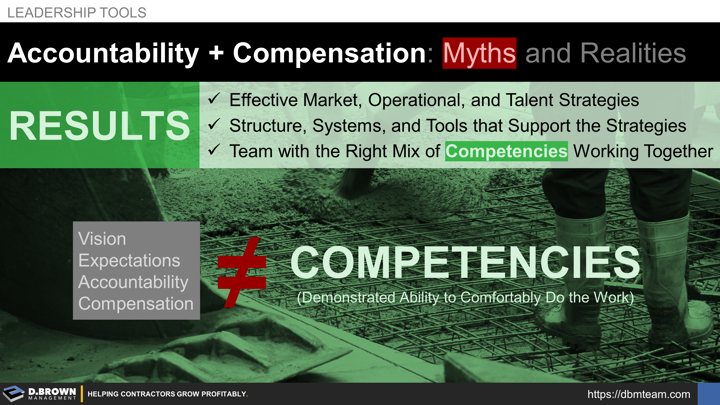Leaders must learn from the best coaches on how to truly develop aligned teams and leverage each person effectively.
RESULTS: Ultimately, this is what you are looking for at the project and company level. How does your scoreboard look against your past performance and industry benchmarks?
Achieving consistent results requires a combination of three major things:
- Effective strategies at all levels including markets, operations, and talent - where do you plan and how do you win?
- The structure, systems, and tools that support those strategies.
- Team with the right mix of competencies working together at all levels from front-line execution to the managers, to those designing and implementing the systems up through those making the strategic choices. It is this integrated set of capabilities and capacity that delivers value to the customers.
No amount of vision, expectations, accountability, or compensation will create competencies. These are only enhancers if the individuals have the required competencies.
- Clarity of vision the foundation for team alignment.
- Expectations (standards) must be clear, achievable, and integrated into a business model that supports your strategies.
- Accountability is a critical aspect of management for creating consistent outcomes given inconsistent inputs. Clarity of standards and the systems to best achieve those standards along with feedback loops to ensure right outcomes (Quality Control / QC) and right process (Quality Assurance / QA) are the foundation of accountability.
- Compensation is required to both attract and retain talent. Compensation is the trade for a certain set of competencies, capabilities, and results expected for the job role.
Competencies can only be identified through rigorous interviewing, testing, and reference checks.
Competencies will only be developed through disciplined training, coaching, and feedback.
For competencies and capabilities to be developed, there must be a combination of:
- Aptitude
- Desire
- Training and Possibly Certification
- Continuous Coaching via Routine Management
- Discipline - From the Subordinate and their Manager
Remember that we solved a talent shortage far worse than we are facing today during WWII with the Job Instruction (JI) Program. Learn more about the Five Step Foreman Coaching Outline and adapt those tactics to other job roles.
Depending on the role, there will be different balances of training and coaching over time.
Always refer back to the Coachability and Capability Matrix.
Responsibility, results, and compensation must ultimately align. Compensation must be aligned with the market for the combination of skills, competencies, capabilities, aptitudes, relationships, experiences, and capacity you are hiring for.
Optimally, you will have aligned your talent in four main layers from the customer through to compensation. All must be integrated together to produce consistent results.
If all the above seem to be working pretty effectively and business results still aren't where you want them to be, you may be at decision point in your growth cycle.

